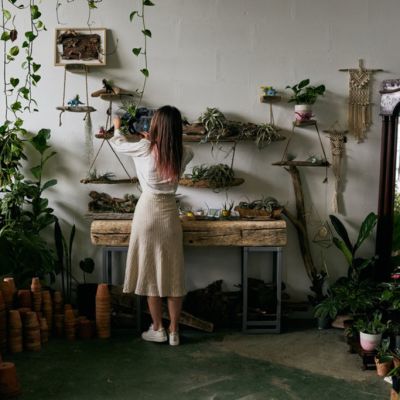These are the biggest predictions for home life in 2030 and beyond

What will our homes look like in the future? It’s tempting to daydream about robots and self-driving cars, but the next 10 to 20 years will probably look much the same as they do now, with a few more conveniences.
Walkley Award-winning author and broadcaster Antony Funnell, who hosts the ABC podcast Future Tense, predicts that the electricity grid as we know it will shrink, while our reliance on renewable energies will undoubtedly grow. Meanwhile, many of the things we currently consider niche will soon be used by every household.
Here are the biggest predictions from Funnell for home life in 2030 and beyond.
Say goodbye to light switches
The homes of the future will be reliant on voice-activated technology, making your ordinary remote control obsolete. Your entertainment systems, airconditioning and light switches will be able to turn themselves on and off at the sound of your voice. Love them or hate them but Siri and her pal Alexa will only grow in use.

And … your television
“The days of everyone in the family sitting around a television screen are disappearing,” says Funnell. But that’s not because we’re giving up on our entertainment. Tablets, iPhones and laptops will be how we view our shows, putting an end to communal watching – at least within the home.
“The idea that they’ll be a big television screen in the middle of the room with the family focused on it, those days are over,” says Funnell.
Which will have a knock-on effect on design. “With the central TV disappearing, you’re going to see a trend toward more ‘breakout’ spaces for people, places, or nooks, where, if you want to watch the last episode of Game of Thrones, you can go away with your laptop in a room that isn’t necessarily your bedroom, but it’s not the lounge room either.”
Say hello to smart toilets
Funnell believes that toilets in the next 20 years will do more than function as a place to look at your phone. Toilets of the future will be able to weigh you, measure your vitals, such as blood sugar and blood pressure and provide feedback on what you’ve been eating. Yes, that’s right – future toilets will be able to examine your waste.

Layout
We’re already experiencing it now, but the next 10 years will see a big move toward open-plan design. No more separate rooms, instead you can expect your cooking area to flow out into your eating area and on into your backyard. And, with more technology allowing people to work from home, that backyard is going to become your new office.
“The need for a study or home office came out of a need for fixed technology – fixed phone, fixed fax, fixed computer. But with the mobility of phones and tablets, the need for a home office is gone,” says Funnell, who adds that people will now sit in their backyards or living rooms to do work.
Bigger houses
The idea that were all going to be living in tiny flat-pack houses is incorrect, says Funnell. “Researchers have found that there aren’t that many, despite the hype, and that people use them as a stepping stone to get into the housing market. They’re not really motivated by environmental issues either.”
Instead, Funnell predicts that the backlash to high-density apartment living in the inner city will lead to an exodus.
“We’re used to the narrative that the way our urban cities work is that everyone wants to live in the city centres. But it wasn’t that way after World War II,” says Funnell.
“After World War II, everyone was moving out and we had the growth of all suburbs. It’s not unreasonable to think that in the next 10 or 20 years we will have a premium put on suburbs again – liveable suburbs where people feel they can spread out a bit, where there’s bushland.”

Part of this backlash will be people who are sick of cramped spaces and looking in on their neighbours, and part of it will be about more people working from home.
But, cautions Funnell, it will only really be an option for those who have the money to do so, as the current housing market will lock ordinary people out of the trend.
”The move out of the inner city will only be for those who can afford to make the change. And that will just exacerbate inequality. For those at the bottom of the socio-economic scale, the future will be densely packed inner-city unit towers, because they have no choice.”
The one silver lining is that these big houses will likely be built with sustainability in mind. Funnell predicts that plastics, in particular, will be re-purposed into building materials.
But the idea that we will have fully functioning, environmentally friendly homes and self-driving cars in the next decade is a tad ambitious.
“Much of what we have in our houses now has been around since the last century, just with added modifications. Human nature doesn’t change all that much.”
We recommend
We thought you might like
States
Capital Cities
Capital Cities - Rentals
Popular Areas
Allhomes
More










